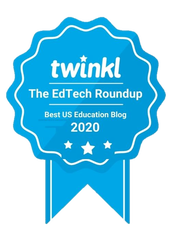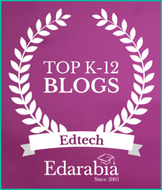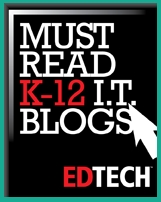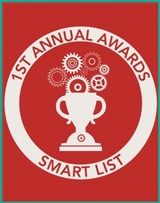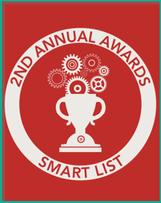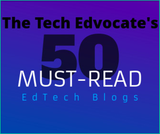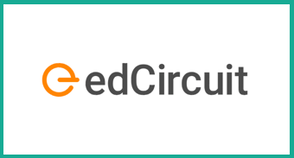
The following strategies presented in the webinar take proven practices for the traditional classroom and add the virtual learning context, resulting in techniques that are must-haves for teachers this fall:
Critical Content
Focusing on critical content to teach to mastery and promote learning is essential, explains Dr. Archer. In reading, there are two main areas: decoding and language comprehension. A student needs to be able to read the words but also have strong comprehension skills. It encapsulates phonological awareness, recognition, and fluency imprint concepts that lead to actual fluency. Learning letter-sound associations is part of the critical content element. Inferential and academic language skills, background knowledge, plus literal and narrative skills are all part of the process. Teachers should ask: What is the most relevant content that I introduce and come back to for students?
Motto #1 from Dr. Archer: Critical content comes down to "Teach the stuff and cut the fluff."
Break Down Complex Strategies to Ensure Learning
Various researchers are discussed in the webinar, regarding their work on phonological awareness, the sequence of letter-sound associations, and the patterns inside words.
Teaching systematically, such as the process involved in helping someone learn a musical instrument, is described as an example of incremental success leading to motivation. By recognizing achievement and value, one is motivated to do more as a result. With the continuation of Zoom to Boom in the fall, this will be even more critical, says Dr. Archer.
Motto #2: Success breeds success but, more importantly, success + value = motivation.
Quality Instruction
The best learning results from quality instruction, which entails demonstration, guided practice, and the checking of understanding. Dr. Archer gives credit to Madeline Hunter's work as the seed to the knowledge. The “I do it; we do it; you do it” approach is a process that connects quality instruction with meaningful learning.
Motto #3: "How well I teach = how well I learn," leading to the idea of "How well they learn = How well I taught."
Learning Made Visible
It's important to actively involve all students in responding throughout a lesson, says Dr. Archer. This makes learning visible in the remote setting. As responses go up, so does learning, and management issues go down. These "responses" come in verbal, written, reading, action, and technology-driven forms. The most common practice of a teacher asking and students raising their hands is popular, but it only shows the success of the most gifted. It's vital to set up all students for success. Using hold-up cards can be a great resource to involve all students in response and action.
Dr. Archer adds that physical distancing will be a challenge with these approaches. Traditional partnership learning will be unavailable, yet individual and class discussions can take place. Whiteboards are useful with distance learning and response sheets. All types of reading except for partner reading are encouraged. Anticipating what will be different is essential to transitioning to remote models. Students' virtual whiteboard on other objects, such as plates and note sheets, can be useful. Structured partners can help in adaptation to physical distance learning. It becomes the partner that's "got your back," making physical distancing classes and remote learning more social.
Motto #4: Learning is not a spectator sport. If students are not holding up their response cards or writing on their whiteboards, then as teachers you know that they are not cognitively with you. Students need to join into the learning.
Monitoring Students' Responses
No matter the platform, monitoring of responses is imperative, Dr. Archer explained. She describes the approach of "As simple as 3,2,1." It involves introducing student names, calling on them to make sure that answers are accurate and immediate. An ongoing collection of data can make sure that responses are occurring throughout the group to ensure equity.
Distancing measures are changing the monitoring process. Dr. Archer explains how feedback will need to take place in terms of praise, honoring work, and encouraging growth. Correction is most effective through positive feedback and reinforcement. Smiling with students online is always invited.
Motto #5: Affirm and Inform. "Feedback feeds forward."
Practice and Management Models
Dr. Archer rounds out the webinar with an in-depth look at practice and management methods. The idea takes on three forms: Deliberate practice, retrieval practice, and spaced practice over time. Data proves that there are high effect results for all three areas.
Motto #6: Practice doesn't make perfect, but instead perfected practice over time makes perfect and permanent.
Management models need to be well-formed, explains Dr. Archer. It's important to recognize the essential support for teachers and students through management procedures. First, create a well-organized environment, then teach practical routines: predictability predicts ability, she shares.
Try not to start classes with socialization, she says. Teach and then socialize at the end. Make it predictable with clarity. Provide pre-corrections because “if you expect it, pre-correct it.” Look for the good in students and maintain a perky pace to teaching. Intentionally establish positive teacher-student relationships that support learning in the classroom and virtually.
Motto: #7: Connect. Connect. Connect. Be kind. We need to be very kind to ourselves, family neighbors, staff, and children. Teachers have the most capability of spreading kindness.
This article was originally published on edCircuit






